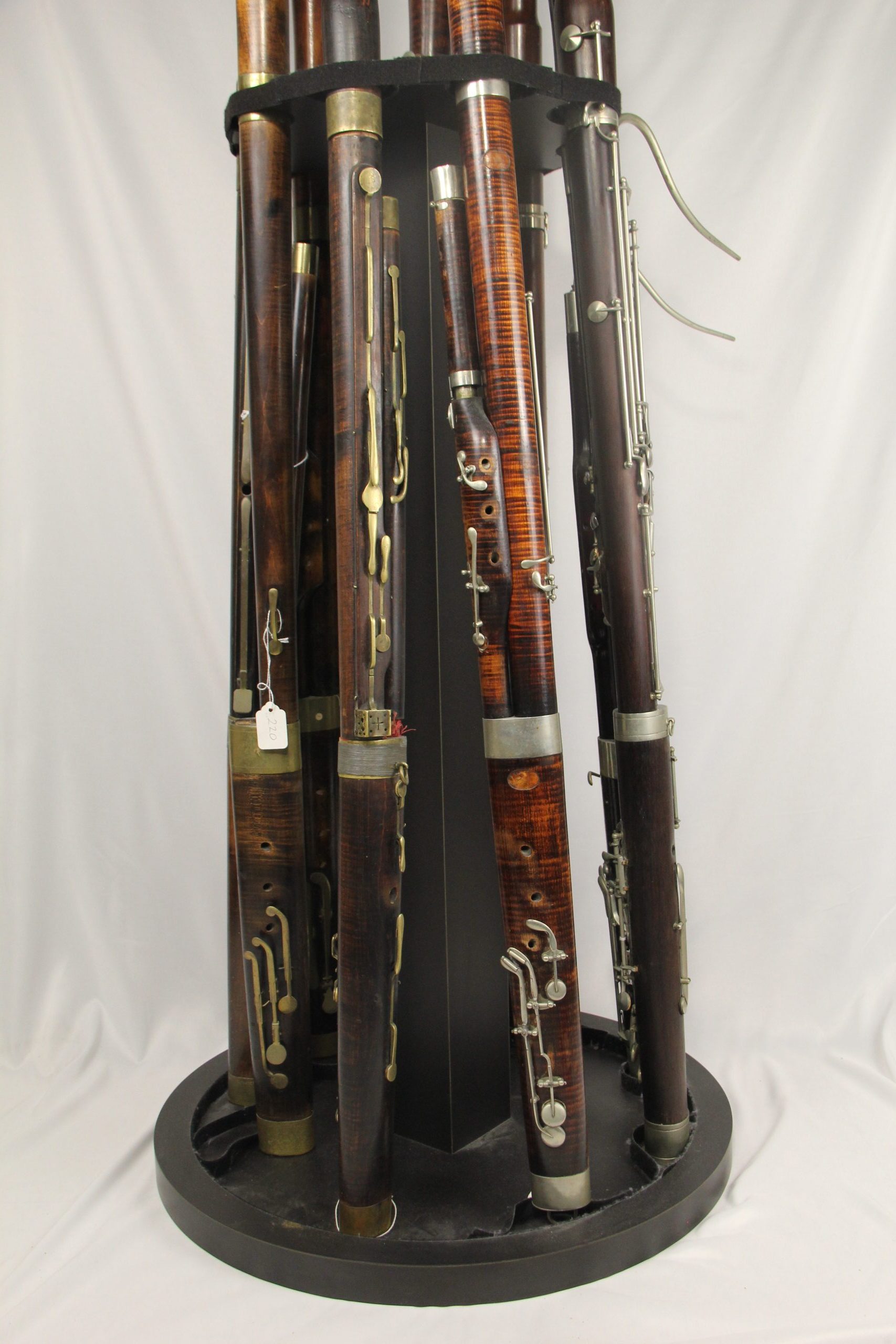6-Key Bassoon
Details
- Origin: London, England
- Date Made: 1830-1844
- Maker: John Hasler
- Collection: E 221
Description
6 round, flat, brass keys mounted in brass saddles. The 3 open keys with flaps of type “U ” (Young). The 3 closed keys of elongated dumbell shape. All key shafts of thin bent brass. Springs attached to wood. Material: fruitwood stained black. The widely flared bell of a brownish finish. Brass ferrules (the lowest on the butt is a replacement). Tube length: 209.2 cm. Bore: Conical. Top of wing, 1.0 cm.; bottom of wing, 1.65 cm.; bottom of long joint, 2.35 cm.; top of long joint, 3.10 cm. Condition: good. Crook absent.
Not much information exists on London-based instrument maker John Hasler, but several of his other bassoons are extant or archived online, some even for sale. It seems he primarily made bassoons. The bell may be from another instrument. A faint stamping is discernible on the bell and bears further investigation. The crook stamped “G4” with bassoon 220 may belong to this instrument (this stamp occurs often on English crooks).
Bassoons with 6 keys began to appear in the late 18th century, following the earlier popularity of models with 3 or 4 keys. A variety of makers were producing these instruments at the time and a standard model for bassoons with more keys had yet to be developed, meaning construction, fingering, and design differed from instrument to instrument. Mozart’s “Bassoon Concerto” was written during this period.
Sources
“The Origins of the Bassoon the Birth of the Bassoon.” The origins of the Bassoon:The Birth of the Bassoon – Musical Instrument Guide – Yamaha Corporation. Accessed June 15, 2022. https://www.yamaha.com/en/musical_instrument_guide/bassoon/structure/.





